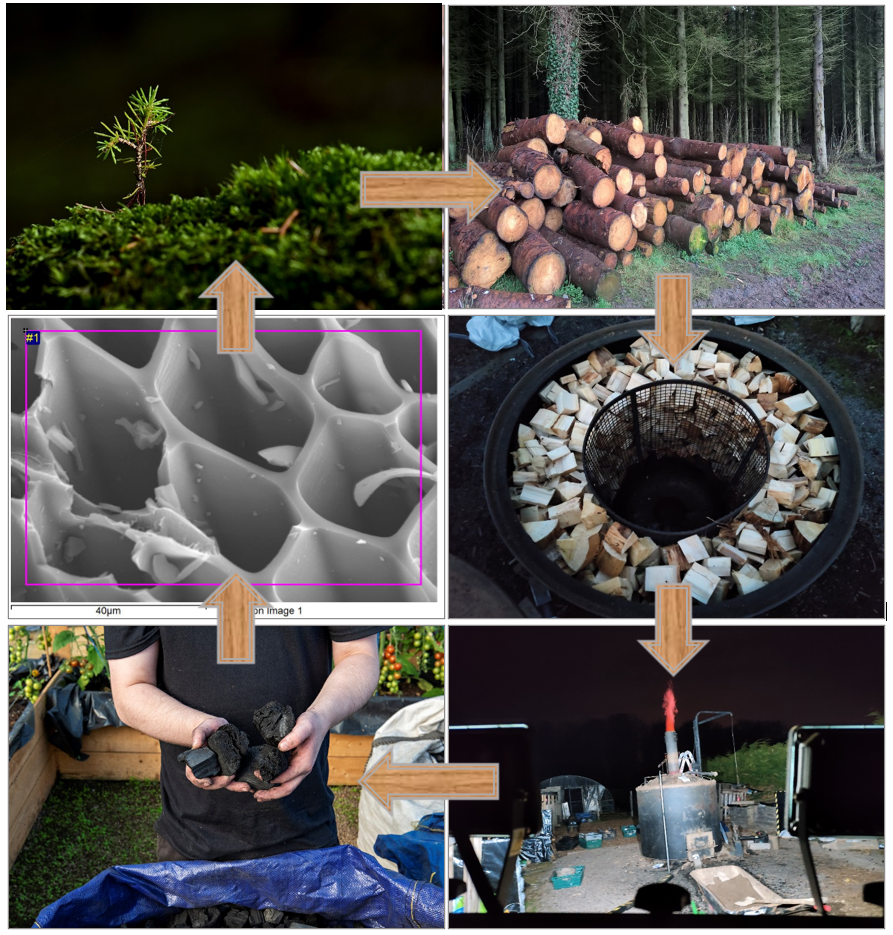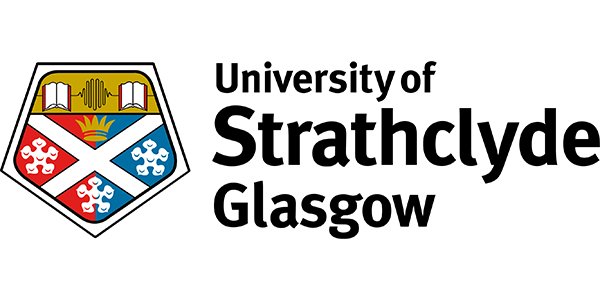Home // Shop
Our new Pure Biochar product range can accommodate customers with small house plants, all the way up to avid allotment gardeners!
As well as new updated packaging, our Pure Biochar pricing has been updated, offering our high quality biochar at the best prices possible!
Our Pure Biochar is made responsibly from maintenance, felling, and forestry arisings from within the Kinneil Woods.
Biochar has been shown to improve soil structure, aeration, fertility, plant health, and crop yield. It will remain in your soil for thousands of years, acting like a ‘storage sponge’ – collecting and storing more nutrients and water – which it will slowly release to your plants as they need it.
1L of biochar …
…has stopped the release of approx. 2.02 kgCo2e into the atmosphere!
…has a surface area more than 3 times the size of the Hampden Park pitch!
…will provide a safe haven for beneficial soil microorganisms for decades, centuries, and millennia to come!

Over their lifetime, trees do an amazing job of taking in carbon dioxide from the atmosphere which is stored in the structure of the wood itself. However, if the tree is chopped down and sent to landfill, or falls naturally and is left to decompose in the forest, then as it decays the tree will release all of the carbon it has collected back into the atmosphere.
However, if we convert it to biochar – a stable form of carbon that is obtained from ‘baking’ organic matter in an oxygen limited environment – then it helps to lock up the carbon that the wood has stored. For every tonne of wood we convert to biochar, we stop the release of approx. 3 tonnes of carbon dioxide and the carbon itself is locked into a stable form which will resist decay for up to 5000 years.
After locking away the carbon, the biochar can be utilised for a variety of agricultural, ecological, and environmental uses, with its most prominent current use being as a soil amendment.
The reason we began exploring the potential of biochar was to make the perfect soil, which could helps us grow as many fresh fruit and vegetables for foodbanks as possible!
Biochar does this by enhancing water retention and nutrient availability, promoting healthier plant growth. Its porous structure provides a habitat for beneficial microorganisms, improving soil fertility and structure. Additionally, biochar helps sequester carbon, mitigating greenhouse gas emissions, and can remediate contaminated soils. It acts as a long-lasting carbon sink, contributing to climate change mitigation and sustainable agriculture.
Biochar has many names and terms, which can get confusing, so we have simplified a few things to help you out. Biochar can either be:
• Pure Biochar
This is biochar straight from the kiln – No changes or additions, just pure biochar!
• Charged Biochar
Pure Biochar can be used to soak up water and nutrients, ‘charging’ it with all the helpful resources you need for strong, health plants.
• Activated Biochar
Pure Biochar, or even sometimes the materials used to make it, can be thermochemically changed allowing us to tailor the structure and characteristics of the biochar itself, ‘activating’ it for a specific intended use. We are currently developing Activated Biochars with our University Partners which can be used to tackle nutrient pollution, reduce toxic algal blooms, and improve food security.
Biochar is very competitive within the soil and should not be added directly to existing plants. Instead, you must charge your Pure Biochar prior to use, filling it with nutrients and minerals that it will slowly release to your plants.
Naturally Charged – This can be done by adding your Pure Biochar to your composting bin, where it will soak up all the nutrients from the decomposing matter, or by adding Pure Biochar to your growing area in the Off-Season, where it will store the nutrients and acclimatise to your soil ready for the following spring.
Quick Charged – Your Pure Biochar can be charged over a few days by adding your Pure Biochar to a container, adding 400ml of boiling water per L of biochar, and adding in the appropriate amount of your favourite plant food – we like to use Organic Seaweed Extract. Mix it all together and leave it for a few days until the biochar absorbs all the water in the container. Once charged, your biochar can be added to soil for planting.
Our biochar ambitions are supported by our amazing academic partners, the University of the Highlands and Islands and the University of Strathclyde.
Our academic journey began thanks to Interface, as part of our Launch Me Accelerator course with Firstport. Following our expertise request, we chose to work with UHI: North Highland as our lead academic partner, due to the wealth of technical expertise within the organisation – particularly Dr. Pap and Dr. Taggart. The college is also home to the Environmental Research Institute, giving us access to a wide network with relevant connections, and both our organisations have complimenting visions for the development of biochar and its active use in a number of environmental fields.
Phase 1 – Was the characterisation of our Pure Biochar, produced across a range of feedstocks. This allowed us to analyse our biochar prior to functionalisation and suggest activation methods.
Phase 2 – Advanced Analysis and Activation Experiments were conducted with UHI and the University of Strathclyde, who could provide advanced materials testing and analysis. This investigated the various activation methods and factors, helping to select the preferred parameters for nutrient collection and perform lab scale tests. These experiments helped us to design our AquaPure Biochar, which improves water quality whilst harvesting and storing nutrients.
Phase 3 – We conducted Industrial Trials at Scottish Water’s Wastewater Development Centre, where Dr. Pap from UHI conducted field trials using our AquaPure Biochar, highlighting its effectiveness in an industrial environment.
PhD Studentship – We have an on-going PhD Studentship with the University of Strathclyde and IBioIC, titled “Efficient utilization of biochar for water remediation and soil amendment – towards a circular economy“. This collaboration is looking deeper at the interconnected nature and application of biochar across several environments.
With the help of our academic partners, the Scottish Government, and SEPA we hope to unlock the potential of biochar, whilst ensuring environmental safety and promoting social responsibility.



Biochar is a powerful carbon capture tool which can help Scotland achieve it’s NetZero Ambitions, however it’s true potential lies in it’s interconnected application.
From waste management and carbon caputre, to improving soils and growing fresh produce for foodbanks; From improving air and water quality, to creating green and carbon consious construction products; Biochar is capbale of transforming Scotland’s approach to sustainability.
Our Biochar Cicular Economy will help unlock our ambition of putting a farm behind every foodbank, financed by solving ecological and environmental problems at a national scale. Providing funds which allow our communities to invest in themselves; building a stronger society; and a more Sustainable Scotland.

By signing up you agree to with our privacy policy and provide consent to receive updates from our company.
© Sustainable Thinking Scotland CIC 2022. All rights reserved.